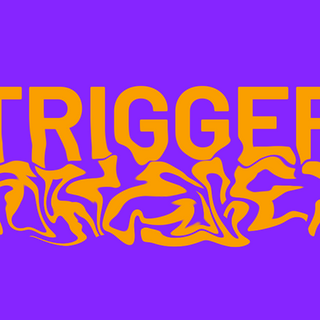
New Study Shows How Metaverse Design Shapes Social Interactions
Choice of avatar and the size of virtual surroundings have psychological impacts on users – findings that can inform metaverse design.

“In the metaverse, you can be anyone or anywhere,” said Eugy Han, the lead author of a new study. This ability to choose one’s virtual environment and avatar, albeit from a restrictive list of options at present, forms much of the appeal of virtual reality (VR) for most. Now, researchers at Stanford University are studying the effects of how these choices impact social interactions in the metaverse.
“Minor decisions made by metaverse designers will have psychological impacts on users,” the researchers noted in their paper.
The study, published in the Journal of Computer-Mediated Communication, noted that when individuals are part of a group, they become “interdependent,” and non-verbal dynamics like “motion synchrony,” or coordinated movements, and face to face communication, signal this. The paper stated that a higher motion synchrony has previously been associated with greater rapport between teachers and students and higher creativity as well. VR, by its ability to track motion, allows researchers to study this measure of social interaction. They found that larger, open virtual spaces and non-generic, self-avatars were more conducive for work and collaboration.
Reports suggest the metaverse, “a network of interconnected virtual worlds” that is experienced through VR headsets, is primed to become the way we work and socialize in the future, and is already being used in educational and professional settings. The Stanford study undertook two field experiments with 272 student participants to not only examine the effects of people’s visual appearance and surrounding environment in VR, but also observe if there are any changes in these effects over time. As Han said, “Our ongoing work reported in this study is showing who you are and where you are matters tremendously for learning, collaborating, socializing, and other metaverse activities.”
Related on The Swaddle:
Why the Origin and Impact of the Metaverse Is Worrying
The current study is one of the first large-scale, longitudinal field experiments to probe how “multiple sets of larger groups and social dynamics evolve over time in CVEs.” CVEs are collaborative virtual environments where people interact with each other in the form of digital avatars. Previous research has shown that avatars can affect people’s perceptions, attitudes and behaviors, both consciously or unconsciously. To study this, researchers at Stanford devised an experiment where participants interacted with one another in virtual worlds either as themselves, or as avatars that were uniform for everyone – that is, they all looked and dressed alike.
When the participants’ avatars resembled their physical world appearances, they exhibited more non-verbal synchrony, or in other words, their movements and gestures were coordinated with those of the group. They also reported feeling more “in sync” with themselves and others. Donning a generic avatar, on the other hand, led to greater enjoyment. Han summed up the results, saying, “People enjoyed being in generic avatars stripped of all identity… When represented by self-avatars, the students reported feeling more active and engaged.”
Meanwhile, in the second experiment, students interacted in a number of indoor and outdoor virtual environments. For this purpose, the researchers created a range of 192 virtual worlds to represent both constrained and spacious settings, including tight train cars, walled gardens, and expansive open fields.
Here, the researchers found that when the participants were in open virtual spaces as opposed to constrained environments, they showed greater “non-verbal synchrony” and reported a rise in positive measures such as group cohesion, pleasure, arousal and enjoyment. While the size of the virtual space of indoor environments had bearings on psychological impacts, those that simulated being outdoors in nature led to more positive feelings, independent of space size. “Large, open, panoramic spaces for people to move around in really helped with group behavior,” Han said.
Across both studies, there was an observable increase in self-presence and realism, possibly due to a greater level of comfort with the technology and their avatars. The decrease in pleasure, arousal and enjoyment could be attributed to the novelty of the medium wearing off, researchers said.
Related on The Swaddle:
The Science Fiction Writer Who Coined the Term ‘Metaverse’ Is Building His Own
According to Jeremy Bailenson, co-author and the founding director of Stanford’s Virtual Human Interaction Lab, one key takeaway of the study is that self-avatars are the preferred option for more “productive and collaborative interactions,” such as in virtual office settings. Further, creators of virtual spaces should choose large, outdoor environments over confined and cramped meeting rooms or seminar halls. “At the very core of collaboration is people attending and reacting to one another in a productive manner… and our data show that all these great downstream things happen when you make your virtual rooms huge compared to a traditional office space,” Bailenson said.
The researchers noted several limitations of the study. Being field experiments, researchers cannot rule out the possibility of other external variables that might affect the results. Further, while the participants were heterogeneous in terms of race and previous VR use, they were still students who were studying VR technology, which, the study’s authors say, could account for the effects seen over time. The limited options available for avatar design – such as the binary representation of gender as male or female, and skin color – were also noted as the study’s limitations.
Besides, there are also several concerns about the impacts of metaverse on both individuals and society as a whole. Misgivings around privacy, access inequality, and health concerns such as VR sickness are only some of the issues that are emerging even as stakeholders push for a rapid adoption of virtual reality technology. The Stanford study, however, seems to focus on the benefits of virtual interactions that hinge on two factors – how individuals present themselves as avatars and their digital environment.
Still, the study’s authors believe their research demonstrates “the potential for VR as a novel and insightful medium for conducting psychological studies,” specifically due to its lower costs compared to physical environments and the unlimited possibilities of the digital landscape. “In the history of social science, there are very few studies on the psychological effect of huge indoor spaces, for the obvious reason that it is, for example, very expensive to rent out Madison Square Garden to run a four-person meeting,” said Bailenson. “But in VR, the cost goes away, and one of the more compelling findings from our study is that huge indoor spaces have much of the same redeeming psychological value of being outdoors.”
Ananya Singh is a Senior Staff Writer at TheSwaddle. She has previously worked as a journalist, researcher and copy editor. Her work explores the intersection of environment, gender and health, with a focus on social and climate justice.
Related


An Indian Woman Won ‘Mrs. World 2022.’ But Why Do We Still Have a Separate Beauty Pageant For Married Women?
